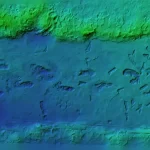New Scientist
Image: byorori.t
Amenemhat III is one of Egypt’s lesser-known pharaohs. He made pyramids, but not on the scale of Khufu’s at Giza. He commissioned many artworks, but none that survive match the opulence of Tutankhamun’s gold mask. He mounted military expeditions, but not with the success of Thutmose III, who built a vast empire. Still, Amenemhat has one claim to fame. Under his rule, a technology emerged that is more impressive, valuable and pervasive than any of these legacies: the alphabet.
The alphabet was a revolutionary way of recording information. But it is more than just a writing system. In a recent book, Philippa Steele and Philip Boyes at the University of Cambridge describe it as an “icon of culture“. Today it is so central to education in most countries that children can often recite it long before they have learned to read or write. Beyond the familiar ABC, a variety of alphabets are used to write in many languages, from Russian to Arabic. But all trace back to one common ancestor.
The story of that first alphabet has long been a mystery, but over the past 25 years we have made enormous progress towards pinpointing when and where it was invented. Most astonishing, the consensus today is that the alphabet didn’t emerge from a state-sponsored initiative as was long believed. Instead, its originators were probably far removed from the ancient world’s elites. Paradoxically, they may even have been illiterate. “No trained Egyptian scribe would write in the way these geniuses wrote,” says Orly Goldwasser at the Hebrew University of Jerusalem, Israel. “He would be ashamed to do so.” Read more on newscientist.com…








